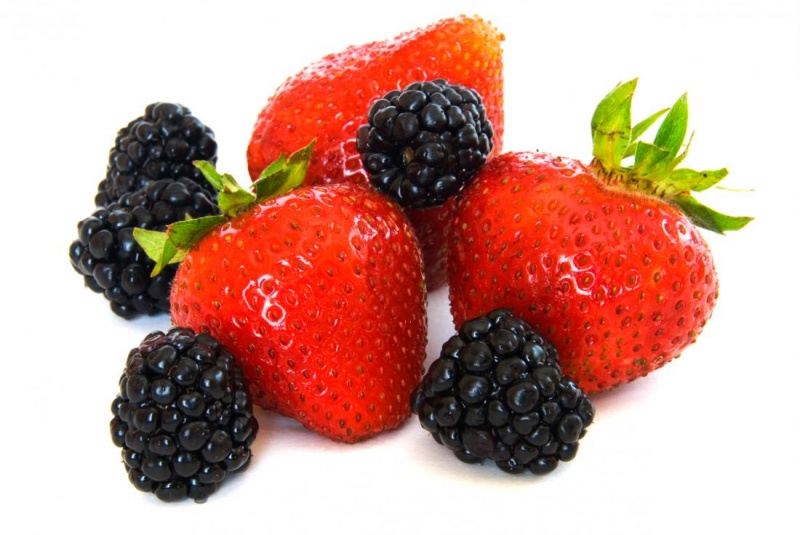
All fruit contains sugar, although some varieties have a higher content than others. People looking to control their sugar intake will often give up or reduce their consumption of fizzy drinks, chocolate, or candy but may not think about fruit.
Of course, fruit is a healthful way to cater to a sweet tooth and add nutrients to the diet, but some fruit, such as bananas and mangoes, have a higher amount of sugar than many others.
In this article, we look at the best low-sugar fruits for anyone looking to reduce their daily sugar intake without compromising on taste and nutrition.
Eight low-sugar fruits
Low-sugar fruits can still provide the fiber, vitamins, and minerals a person requires.
Low-sugar fruits include:
1. Strawberries
Strawberries, like many other berries, are often high in fiber and contain very little sugar.
There are only about 8 grams (g) of sugar in eight medium-sized strawberries. They are also a good source of vitamin C.
2. Peaches
Although they taste sweet, a medium sized peach only contains around 13 g of sugar.
3. Blackberries
Like strawberries, these berries also contain between 4 and 5 g of sugar, 5.3 g of fiber, and 1.39 g of protein per 100 g.
They are also a good source of antioxidants.
It is interesting to note that blueberries contain around double the amount of sugar as blackberries.
4. Lemons and limes
Not many people would pick up a lemon or lime to eat as a snack. However, with no more than 2 g of sugar per fruit and high levels of vitamin C, these are a great addition to a person’s diet.
People can squeeze a lemon or lime into sparkling water to replace other sugary carbonated beverages, or even squeeze lemon juice over a salad instead of using a salad dressing.
5. Honeydew melon
A popular summer snack, a slice of honeydew melon contains around 11 grams of digestible sugar.
Honeydew melon also contains potassium, vitamin C, and iron.
6. Oranges
A medium-sized orange has around 14 g of digestible sugar and is also an excellent source of vitamin C.
Orange juice and all other fruit juices bought from the supermarket may contain added sugars. If a person wants to limit their sugar intake, it is usually better to eat the fruit itself rather than drink its juice.
7. Grapefruit
This low-sugar fruit is a favorite breakfast food.
Half a medium-sized grapefruit contains around 11 g of sugar. If a person finds grapefruit too sharp, they may wish to drizzle a small amount of honey or sprinkle Stevia on top.
8. Avocados
Avocados are almost sugar-free. They are also a good source of healthful fats and fiber.
Incorporating low-sugar fruits into your diet Regardless of its sugar content, fruit should be part of a balanced and healthful diet plan.
Benefits of increasing a person’s daily intake of fruit include:
losing weight or maintaining a healthy weight
getting essential vitamins, minerals, and fiber
reducing the risk of cancer and other diseases
In fact, the American Cancer Society recommends that a person consumes around 2 ½ cups of fruit and vegetables every day.
A person can incorporate low-sugar fruit into their diet in every meal:
Breakfast
People who usually eat cereal should be sure to choose cereal without added sugars. Try adding sliced berries or a peach on top. Alternatively, eating a handful of berries with plain low-fat yogurt is also a healthful option.
Instead of drinking fruit juice, which has a high sugar content, squeezing the juice of half a lemon or lime into sparkling water can be a refreshing alternative.
Lunch and dinner
Even a savory salad can include low-sugar fruit elements. Try using lemon or lime juice as a dressing, or slicing an avocado on top. Orange slices and berries also make great salad toppings.
Whole fruits make an excellent alternative to processed desserts. Low-sugar fruit can be eaten with plain yogurt or made into a fruit salad by adding a small amount of honey if required.
Snacks
Low-sugar fruit can be a great snack alternative. A person can make snacking on fruit easier by pre-cutting larger fruit, such as melons, into bite-size pieces and keeping them in the fridge.
Source : www.medicalnewstoday.com

































